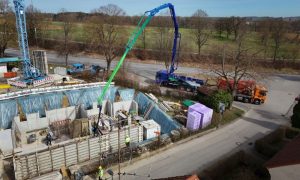Women in Construction Series: The need for balance
Middle East Consultant and meconstructionnews.com to begin a series profiling female construction professionals

To support the drive towards gender balance in the industry, Middle East Consultant and meconstructionnews.com are highlighting female construction professionals in a series of profiles. By telling their stories and sharing their experiences on our print and digital platforms, we hope to inspire more women to join this vibrant industry.
Diversity and inclusion are hot topics in the construction industry, whether in the context of the Middle East or around the world. There are several drivers behind this, but perhaps the one that ultimately set the wheels of diversity in motion is the massive need for professionals to imagine and build current and future construction projects. In the next five years alone, reports show that hundreds of thousands of positions within the construction sector will need to be filled the world over.
Beyond the growing need for talent, building a diverse and inclusive talent pool is just the right thing to do. There’s no reason in today’s world for gender bias to play any part in the recruitment process – the focus should simply be to select the candidate that can add the most value to the organisation.
If you’re curious about how severe the gender imbalance is in the construction industry, a CIOB (Chartered Institute of Building) article published on November 1, 2017 stated that women make up only 13% of construction sector workers, a number which has not changed for two decades. Furthermore, the article noted that only 2% of workers on-site are female.
When Middle East Consultant (MEC) contacted the CIOB directly to discuss its membership statistics, the organisation said that of its 44,000 global members, which includes 1,300 Middle East members, only 7.32% are women. In the MENA region, the organisation says it has 190 female members. These are eye-widening stats, but the upside is that CIOB representatives said the number of female members has begun increasing steadily in recent years.
The Royal Institution of Chartered Surveyors (RICS) has also published several articles on diversity and inclusion, and said that it has recorded up to a 5% increase in new female RICS-qualified professionals in one year. Today, 9% of RICS’ total members in the Middle East are female, while 12% of its assessors are female.
In 2017, RICS recorded 3,809 male surveyors and 330 female surveyors in the region. In the construction sector specifically, there were 3,304 male and 275 female professionals. In property, the institution had 498 male members and 62 female members.
These are staggering numbers. And while they obviously do not include every discipline and specialty in the construction field, they do paint an accurate picture of the state of the global construction industry as far as Middle East Consultant and meconstructionnews.com are concerned.
Further proof of the diversity imbalance can be found quite easily by spending a bit of time on Google or LinkedIn; it’s easy to find articles and reports with headlines such as ‘The only woman in the room’ and ‘Construction: a boy’s club’. The upshot is that an increasing number of articles highlight the need for diversity and inclusion in the construction industry, penned by both men and women. As the saying goes, the first step in solving any problem is recognising that it does exist.
It’s taken time to get to this point of recognition, perhaps too long, but the industry and the players within it are increasingly acknowledging the imbalance and taking steps to rectify it. Talking to 31 female professionals working at consultants and contractors within the GCC, several have highlighted positive steps taken by their organisation to encourage young women to consider the construction field at the educational level, while others have noted that their firm has policies in place to drive towards gender balance and are supporting them with regard to starting families while retaining their employment.
Change has begun, but these are still very early days for the construction industry in terms of balancing the diversity scales. In fact, even though some of the women that Middle East Consultant and meconstructionnews are speaking to for this article have been working in the construction industry for decades, they are still the vanguard, blazing a trail for other women to follow. In working in this heavily male-dominated industry, they are actively encouraging fellow women to join one of the world’s oldest and most interesting industries.















